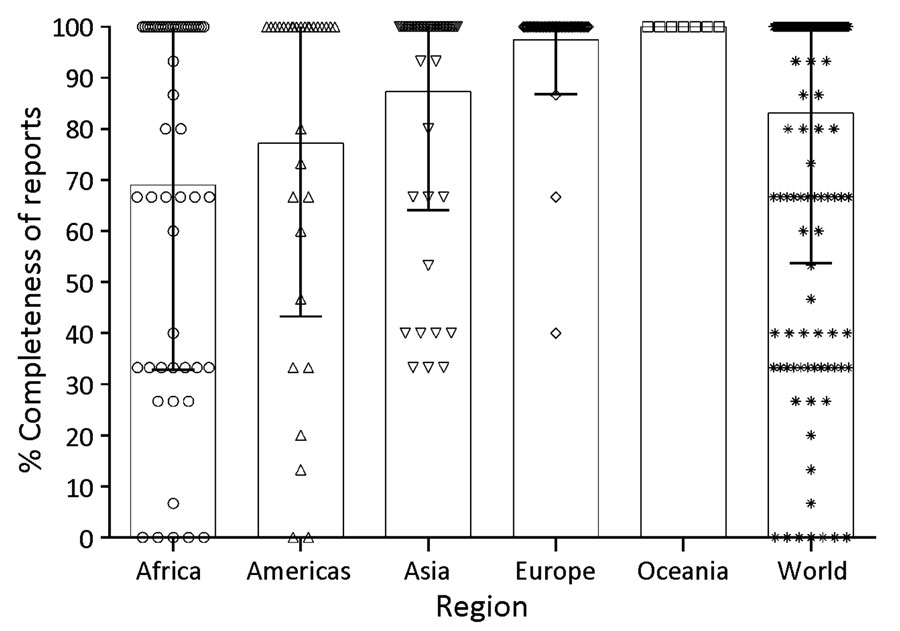Volume 29, Number 9—September 2023
Research
Global Estimate of Human Brucellosis Incidence
Figure 1

Figure 1. Percentage completeness of World Organization of Animal Health annual reports that provide information on each of the zoonotic Brucella species, by worldwide region, 2014–2018. Each point on the plot denotes the 5-year average percentage completeness of reports from an individual country. Reporting the presence or absence of all Brucella species (B. abortus, B. melitensis, and B. suis) equates to 100%. Bar tops indicate mean % completeness for each region and error bars indicate SDs from each mean.
Page created: July 27, 2023
Page updated: August 20, 2023
Page reviewed: August 20, 2023
The conclusions, findings, and opinions expressed by authors contributing to this journal do not necessarily reflect the official position of the U.S. Department of Health and Human Services, the Public Health Service, the Centers for Disease Control and Prevention, or the authors' affiliated institutions. Use of trade names is for identification only and does not imply endorsement by any of the groups named above.